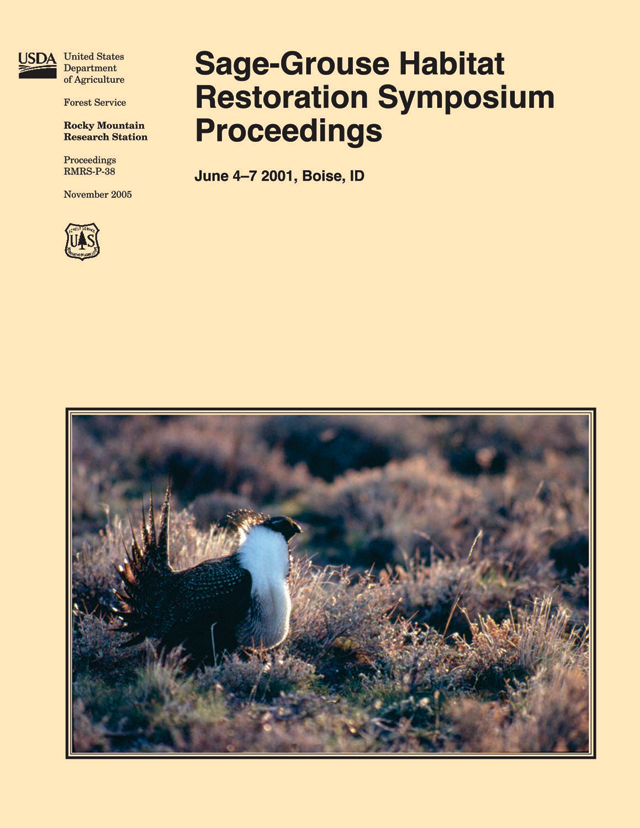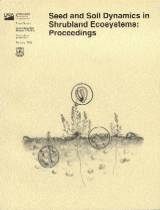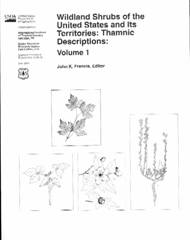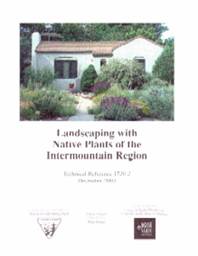Technology Transfer
Grassland, Shrubland and Desert Ecosystem
Research Program-
Boise Team
Revegetation Equipment Catalog
H. Wiedemann, N. L. Shaw, M. Pellant, and S. B. Monsen
The Rangeland Technology and Equipment Council (RTEC), in cooperation with
the Great Basin Native Plant Selection and Increase Project and BLM Great Basin
Restoration Initiative have compiled a web-based publication that provides a
description, applications, photographs, and vendor contact information for
equipment designed for rangeland vegetation manipulation, wildlife habitat
improvement, and disturbed land rehabilitation. Send suggestions and
correspondence to:
Harold
Wiedemann, Revegetation Equipment Catalog
4000 Stony Creek Lane, College Station, TX 77845
979.690.8685
(h.wiedemann@verizon.net)
Restoring Western Ranges and Wildlands
S. B. Monsen, R. Stevens, and N. L. Shaw, compilers
 This
3 volume publication provides background on the philosophy, processes, plant
materials selection, site preparation, and seed and seeding equipment for revegetation of disturbed rangelands, emphasizing the use of native species. The
29 chapters include guidelines for planning, conducting, and managing
treatments, and contain a compilation of rangeland revegetation research
conducted over the last several decades to aid practitioners in reestablishing
healthy communities and curb the spread of invasive species. This
3 volume publication provides background on the philosophy, processes, plant
materials selection, site preparation, and seed and seeding equipment for revegetation of disturbed rangelands, emphasizing the use of native species. The
29 chapters include guidelines for planning, conducting, and managing
treatments, and contain a compilation of rangeland revegetation research
conducted over the last several decades to aid practitioners in reestablishing
healthy communities and curb the spread of invasive species.
Sage-grouse Habitat Restoration Symposium - Proceedings
N. L. Shaw, S. B. Monsen, and M. Pellant, compilers

Sagebrush (Artemisia
spp.) ecosystems occupy
more
than
62,000,000 ha of the western
United States. The
steady loss and degradation of these ecosystems have generated an
ever-increasing sense of urgency in the conservation community. Long-term,
range-wide declines in the ecosystem’s flagship species, the Greater sage-grouse
and Gunnison sage-grouse, have attracted much attention. Yet, hundreds of other
species and entire ecosystem processes are at risk.
Seed
and Soil Dynamics in Shrubland Ecosystems - Proceedings
 A. L. Hild, N. L. Shaw, S. E. Meyer, J.T.
Booth, and E. D. McArthur, compilers A. L. Hild, N. L. Shaw, S. E. Meyer, J.T.
Booth, and E. D. McArthur, compilers
The 38 manuscripts in this
proceedings unite papers on germination of native seed with vegetation ecology,
soil physio-chemical properties, and soil biology to create a volume describing
the interactions of seeds and soils in arid and semiarid shrubland ecosystems.
Wildland
Shrubs of the United States and its Territories: Thamnic Descriptions (Volume 1)
J. K. Francis, editor

A discussion of the general
characteristics of shrubs as a life form and their distribution within the
United States is followed by 311 short monographs containing general
descriptions, geographic distribution, ecology, reproductive habits, growth and
management, and benefits to humans, animals, and the environment. Boise RMRS
scientists contributed 10 of the species descriptions.
Landscaping with Native Plants of the Intermountain Region
H. Parkinson, compiler
 This
guide describes the characteristics and cultural requirements of 101 wildflower,
grass, shrub, and tree species suitable for landscaping in the Intermountain
Region based on their relative ease of growth, availability, and ornamental
value. The information is designed for the homeowner, landscape contractor,
business owner, schools and others that seek to incorporate native plants into
their landscapes for their numerous values including drought tolerance, wildlife
value, historical and cultural significance, and inherent beauty. This
guide describes the characteristics and cultural requirements of 101 wildflower,
grass, shrub, and tree species suitable for landscaping in the Intermountain
Region based on their relative ease of growth, availability, and ornamental
value. The information is designed for the homeowner, landscape contractor,
business owner, schools and others that seek to incorporate native plants into
their landscapes for their numerous values including drought tolerance, wildlife
value, historical and cultural significance, and inherent beauty.
Field Guides to Intermountain Sedges
(E. G. Hurd, N. L. Shaw, J. Mastrogiuseppe, L. Smithman, S. Goodrich)
Field Guide to Intermountain Rushes
(E. G. Hurd, S. Goodrich, N. L. Shaw)
Field Guide to Intermountain Cyperaceae (excluding Carex)
Project completion scheduled for 2008.
  
Woody Plant Seed Manual
F. T. Bonner and
Robert P. Karrfalt, technical coordinators
The manual on seed of shrubs and trees now contains nearly 1,300 taxa in 230
genera, and when completed, will be available as a traditional printed book, a
CD-ROM, and online.
Boise
RMRS scientists contributed descriptions of 20 species in 9 genera to this
manual.
Rush
skeletonweed (Chondrilla juncea L.) in the northern Great Basin -
Research Summary
Rush skeletonweed, an
exotic herbaceous member of the sunflower family, has spread rapidly from its
first known occurrence near Spokane, WA and now occurs on 2.5 million acres in
the western U.S. Recent research has focused on development of more effective
biocontrols, its response to fire in the sagebrush ecosystem and its potential
for spread in the Great Basin.
|








